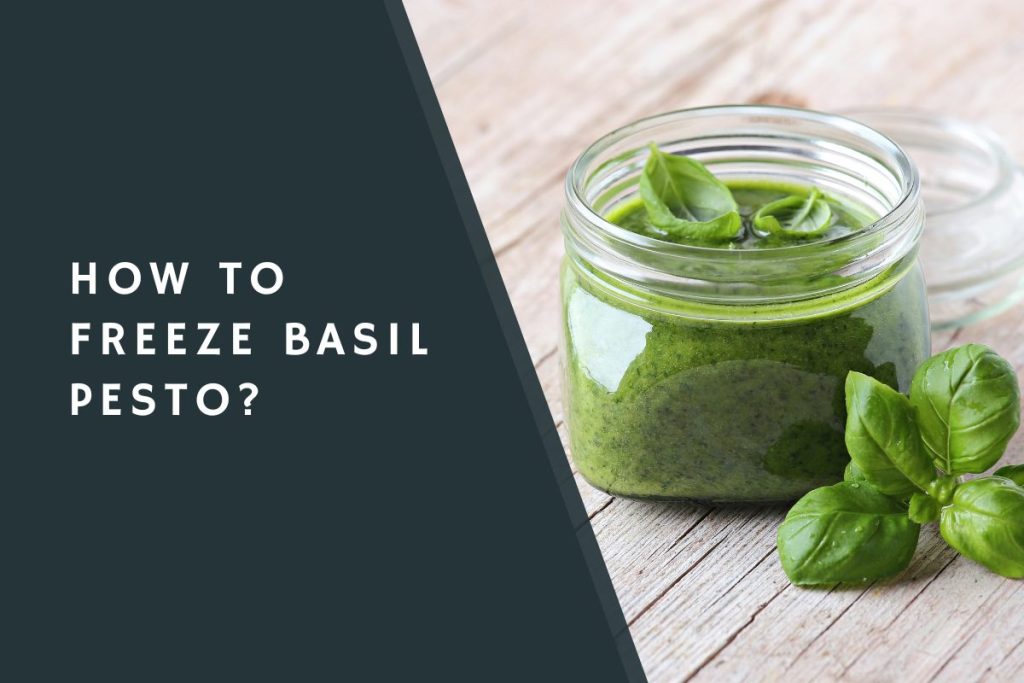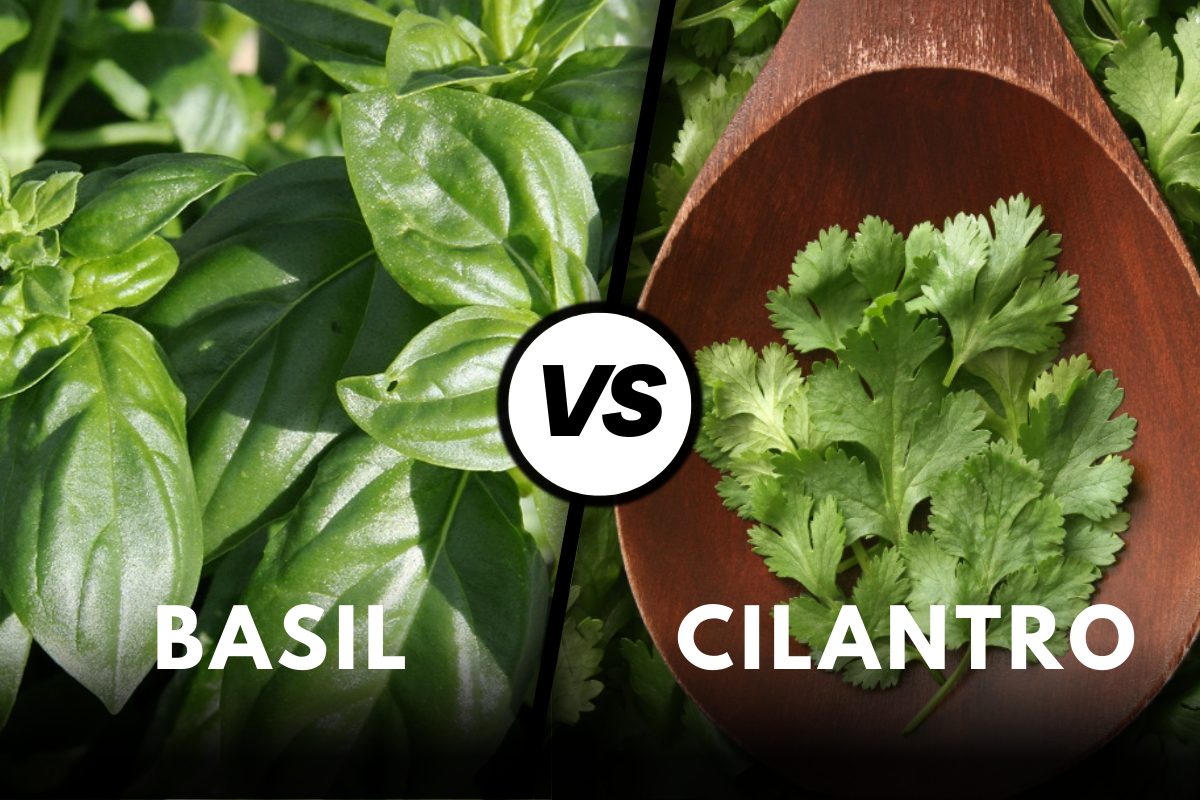When it comes to preserving the summer’s fresh pesto, freezing is a great way to enjoy it all year round. Making and freezing basil pesto is easy, and the results are delicious.
How to Freeze Basil Pesto?
To freeze basil pesto, start by preparing the pesto according to your desired recipe. Once it is prepared, spoon the pesto into an ice cube tray and freeze until solid. Once solid, remove from the tray and store in a freezer-safe container or bag. When ready to use, thaw the pesto in the refrigerator.
To add additional flavor to the pesto after thawing, you may also want to stir in some freshly grated Parmesan cheese. Learn how to freeze your basil pesto so you can enjoy it throughout the year!

See Also: How to Make Basil Juice?
How to Freeze Basil Pesto? – Method
Basil pesto is a delicious condiment made from fresh basil, pine nuts, Parmesan cheese, garlic, and olive oil. It’s a flavorful addition to pasta, sandwiches, and more, and it’s easy to make at home.
However, if you have a lot of basil on hand or want to save some pesto for later, you may be wondering how to freeze it. Here’s a step-by-step guide on how to freeze basil pesto for maximum flavor and freshness.
Step 1: Make the Pesto
Before you can freeze your basil pesto, you’ll need to make it. Here’s a simple recipe to follow:
Ingredients:
- 2 cups fresh basil leaves, packed
- 1/2 cup grated Parmesan cheese
- 1/2 cup pine nuts
- 4 cloves garlic
- 1/2 cup olive oil
- Salt and pepper to taste
Instructions:
- Combine the basil, pine nuts, Parmesan cheese, and garlic in a food processor. Pulse until the ingredients are finely chopped.
- Slowly add the olive oil while the food processor is running, until the pesto reaches the desired consistency. You may need to stop and scrape down the sides of the processor to ensure everything is well combined.
- Season the pesto with salt and pepper to taste.
Step 2: Portion the Pesto
Once you’ve made your basil pesto, it’s a good idea to portion it out before freezing it. This will make it easier to thaw and use later on, and it will also help prevent waste.
You can portion the pesto into smaller containers, such as ice cube trays or small plastic containers. Just be sure to leave a little bit of headroom at the top of each container to allow for expansion during freezing.
Step 3: Freeze the Pesto
After you’ve portioned out your pesto, it’s time to freeze it. Here are a few tips to follow:
- Use an airtight container: To prevent freezer burn and ensure maximum freshness, be sure to use an airtight container to store your pesto. This can be a plastic container with a tight-fitting lid, a plastic freezer bag, or even a silicone ice cube tray.
- Label and date the container: It’s always a good idea to label and date your frozen foods, so you know how long they’ve been in the freezer and can use them before they go bad.
- Place the container in the coldest part of the freezer: The colder your freezer, the slower the pesto will freeze, which will help preserve its flavor and texture. Place the container in the coldest part of your freezer, away from the door where it will be exposed to more fluctuating temperatures.
Step 4: Thaw the Pesto
When you’re ready to use your frozen pesto, it’s easy to thaw it out. Simply remove the desired amount from the freezer and let it sit at room temperature for a few hours, or place it in the refrigerator to thaw overnight.
Alternatively, you can thaw the pesto in the microwave by heating it in short bursts until it’s fully thawed.
Step 5: Use the Pesto
Once your pesto is fully thawed, it’s ready to use! You can stir it into pasta, spread it on sandwiches, or use it as a marinade for chicken or fish. Just be sure to use it within a few days of thawing to ensure maximum freshness.
Tips for Freezing Basil Pesto
Here are a few more tips to keep in mind when freezing basil pesto:
- Make sure to remove as much air as possible from the container before sealing it. This will help prevent freezer burn and keep your pesto fresh.
- Consider adding a layer of olive oil on top of the pesto before sealing the container. This will help protect the pesto from air exposure and prevent it from drying out.
- You can also freeze basil pesto in ice cube trays, then transfer the frozen cubes to a plastic bag once they are solid. This is a convenient way to portion out small amounts of pesto for future use.
- If you’re not sure how much pesto you’ll need for a recipe, you can always thaw out a little bit at a time and add more as needed. This way, you won’t have to thaw out an entire container of pesto if you only need a small amount.
- If you’re freezing leftover pesto, be sure to give it a good stir before freezing it. This will help ensure that the ingredients are well mixed and the pesto will have a consistent flavor and texture once it’s thawed.
- Basil pesto can be frozen for up to 3 months. After that, it may start to lose its flavor and texture.
- If you’re freezing pesto that you’ve already mixed into a recipe, such as pasta with pesto sauce, be aware that the texture of the dish may change slightly after freezing and thawing.
By following these tips, you’ll be able to freeze your basil pesto with ease and enjoy its delicious flavor all year round.
Conclusion
Freezing basil pesto is a simple and delicious way to preserve your pesto for future use.
Whether you’re freezing your homemade pesto or store-bought pesto, it’s a great way to make meal preparation easier.
With just a few simple steps, you can have delicious basil pesto ready to go whenever you need it. Enjoy your basil pesto for months to come!
I am an accomplished tech writer with a passion for simplifying complex technology concepts. With a background in Tech, James has dedicated their career to making the intricacies of the digital world accessible to a broad audience.








